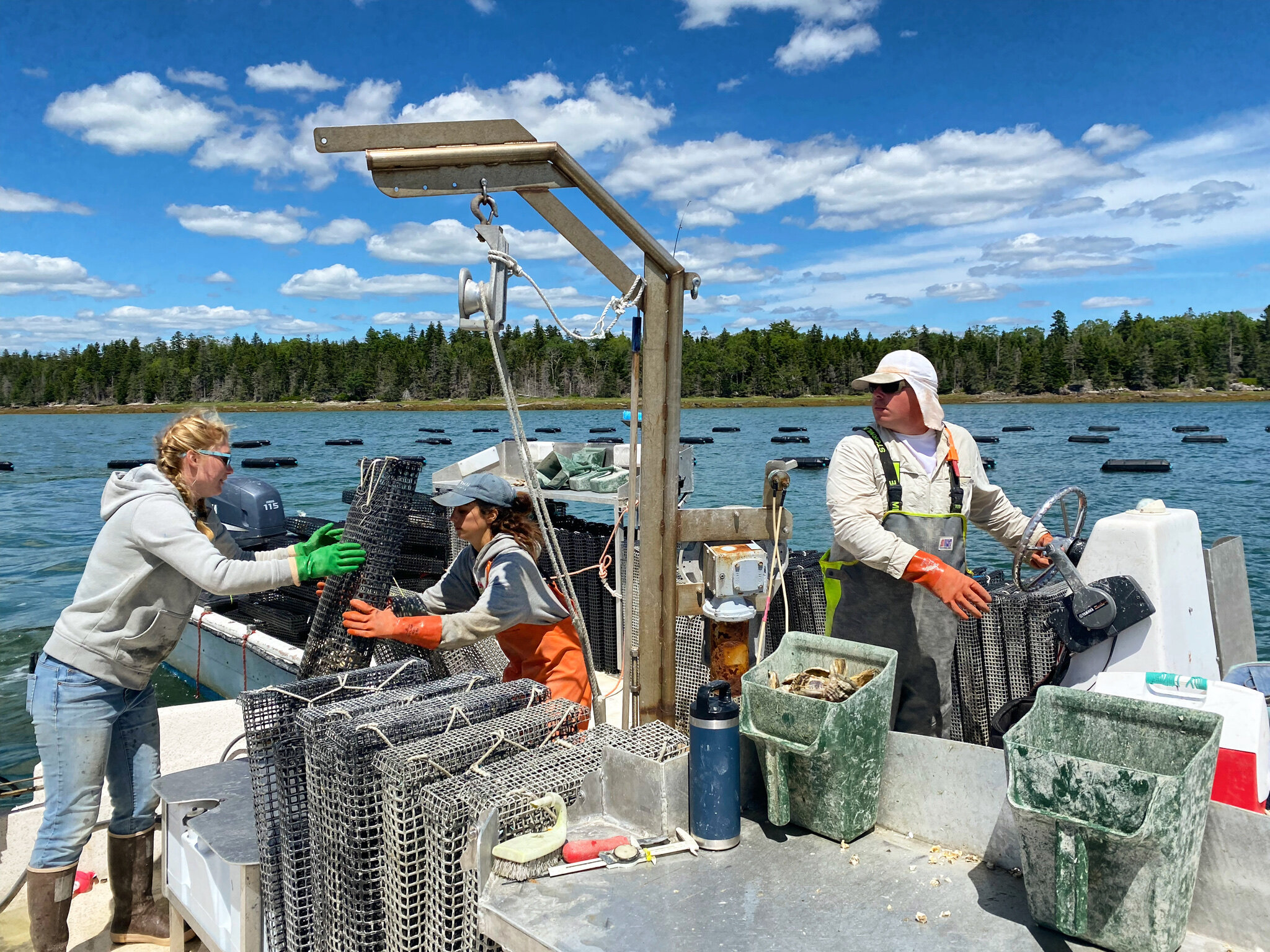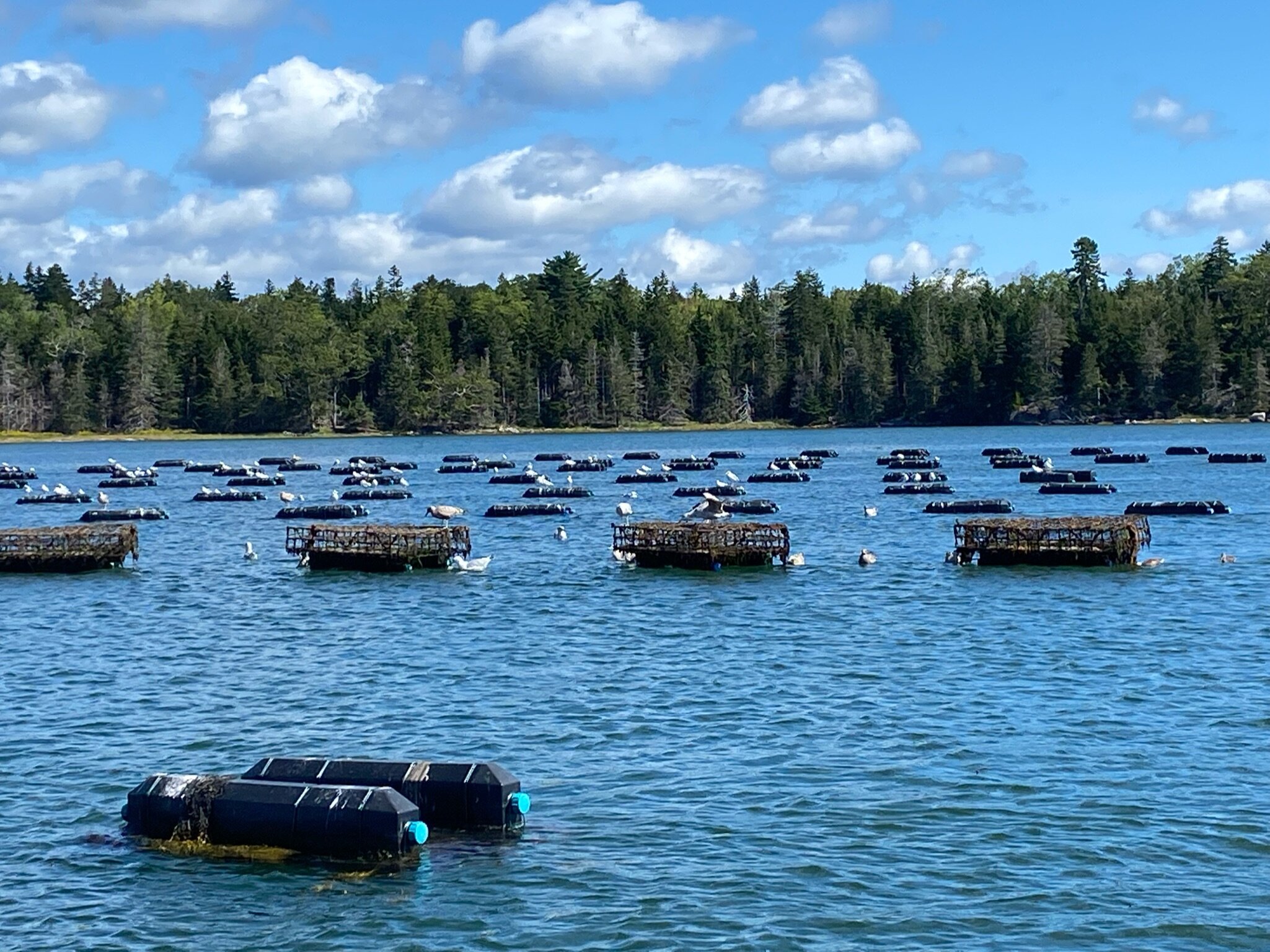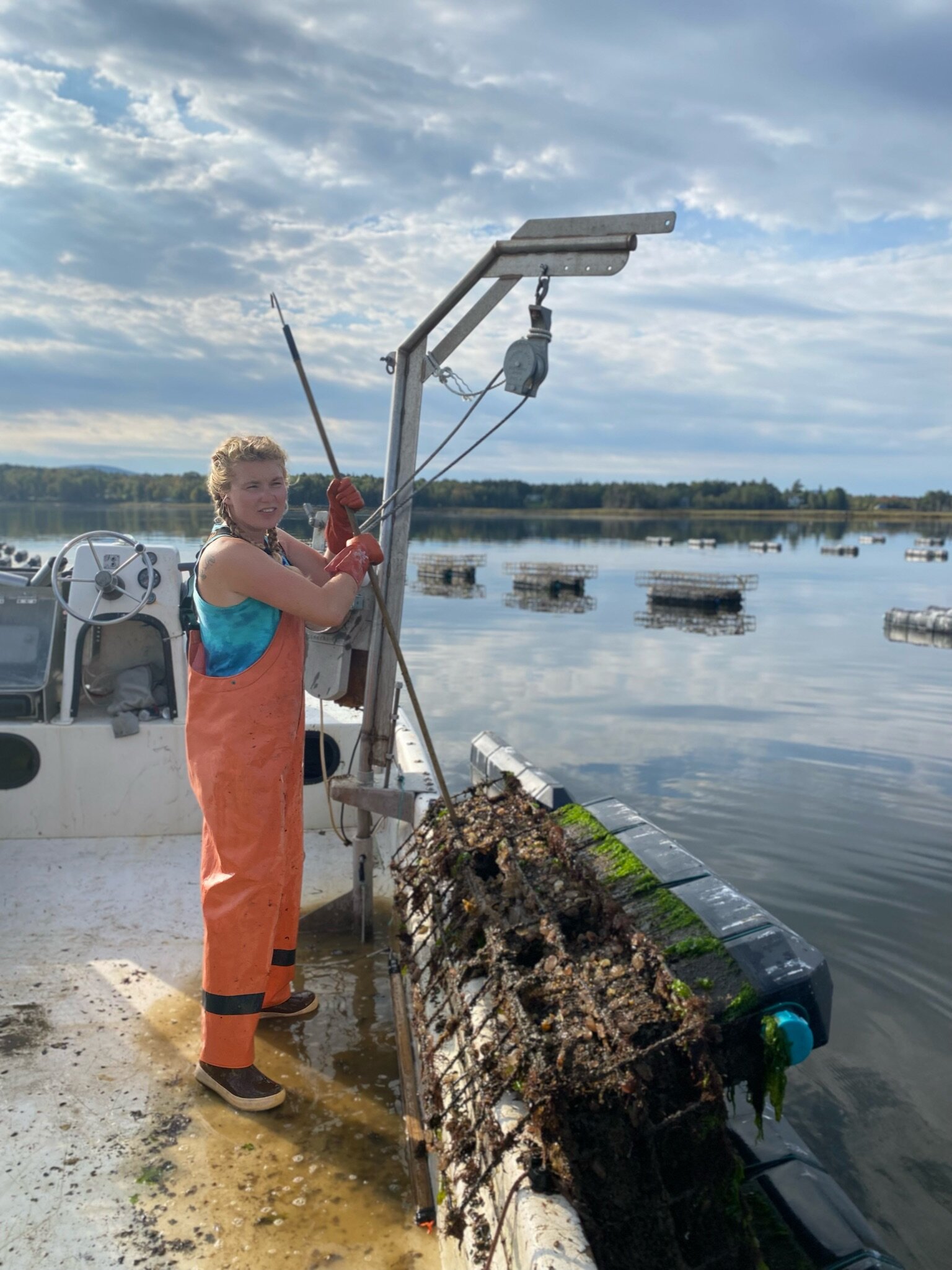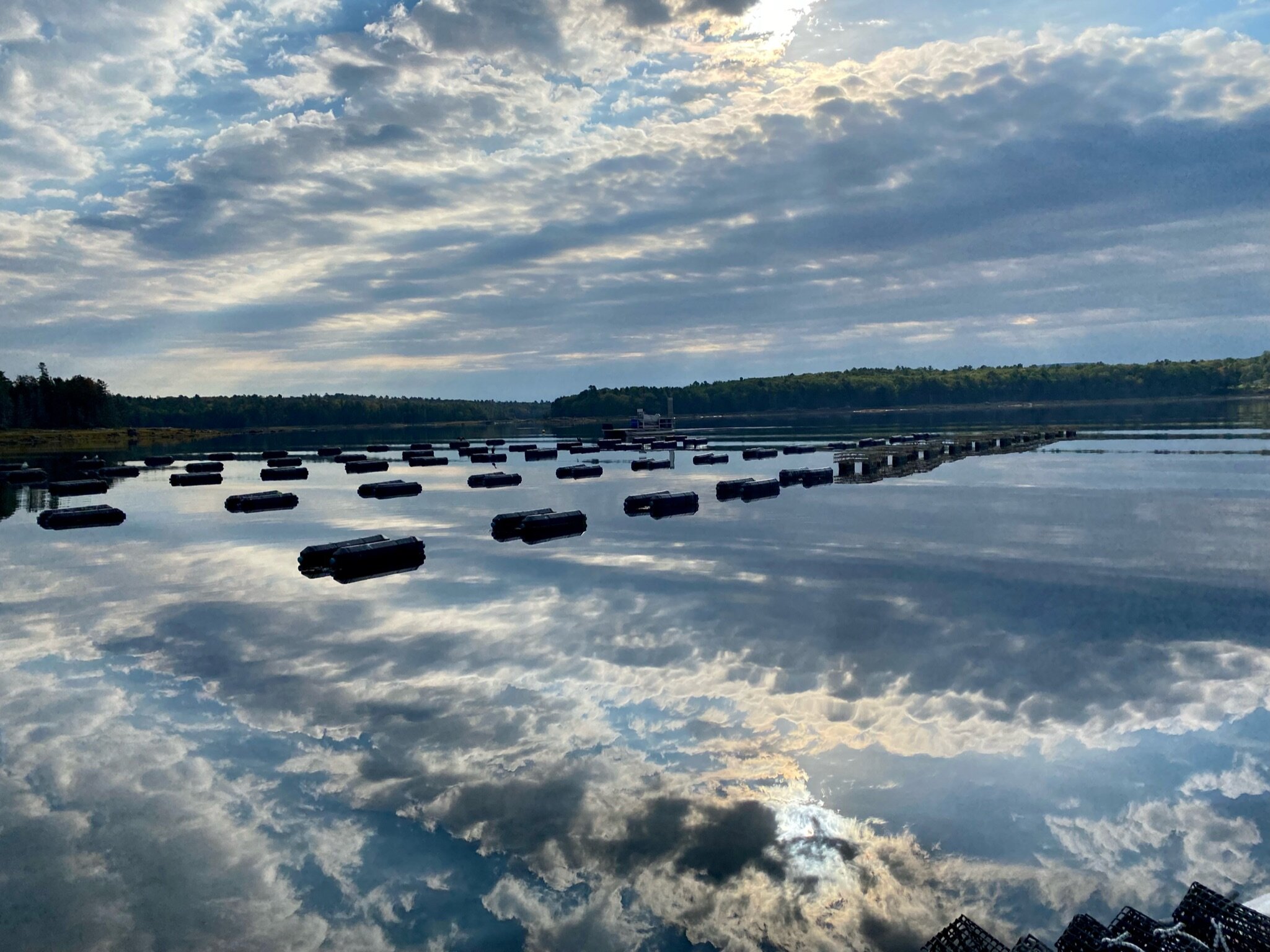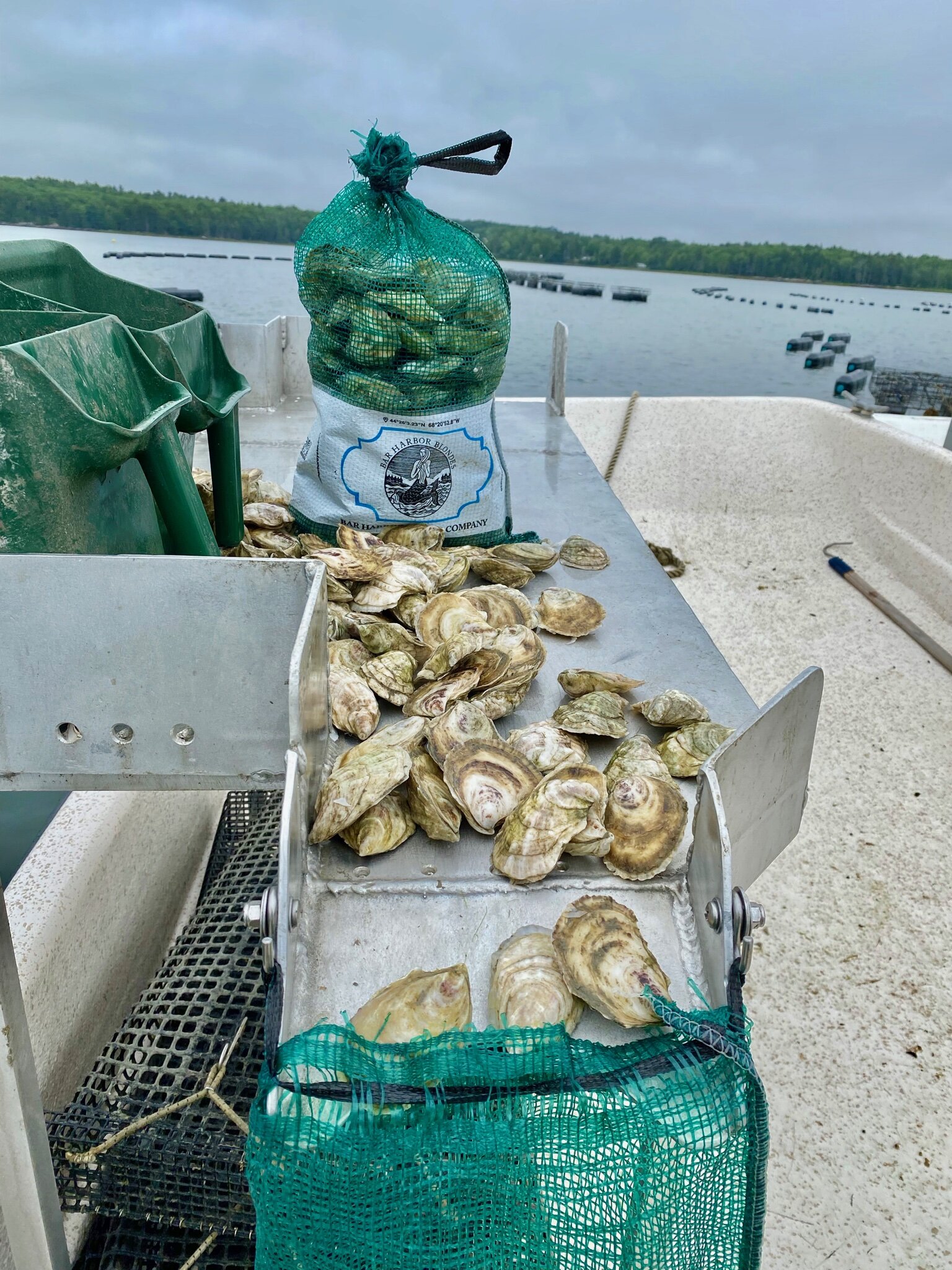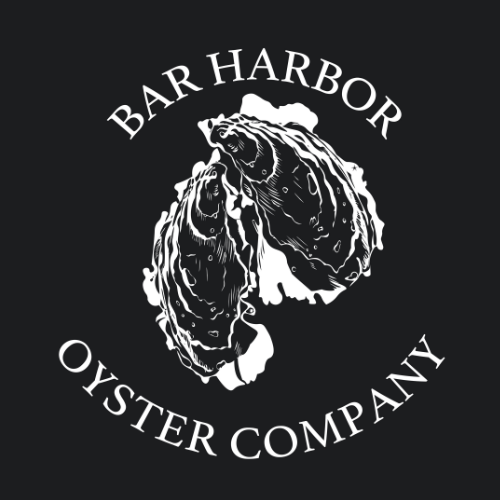THE GROW OUT
The oysters spend their lives in metal cages which float on the surface of the water during the growing season: April--December. The surface waters of Mount Desert Narrows are rich in phytoplankton–tiny algae cells & an oyster’s chosen food source–and stay warm in the heat of the sun, providing an ideal growing environment for young oysters.
We purchase 600,000 oyster seed from a certified Maine shellfish hatchery and “plant” them in floating cages across our farm every year. The oysters we purchase are American oysters, made unique by the qualities of the water they are grown in and the care with which we grow them. Each of those 9-13mm oyster seeds spends three years growing on our 22 acre lease before officially becoming a market-sized Bar Harbor Blonde.
Our tenacious team works daily to keep our oysters clean and healthy.
This starts with regular cage-flipping, to expose oysters and gear to the bleaching power of the sun and eliminate all kinds of biofouling.
Biofouling ranges from soft organisms like sponges, sea squirts, and seaweed, to animals with hard shells like barnacles and mussels that grow all over the cages and the oyster shells.
These organisms can impact oyster growth and survival by stealing food and oxygen from our growing Blondes, so it is important to minimize biofouling at all times.
Additionally, oysters are regularly graded to continue the effort against biofouling and sort the oysters into similar size classes.
Those size classes are distributed at comfortable densities across the farm to ensure oysters are able to breathe and feed effectively, away from the pressures of overcrowding with other oysters.
After the growth period for oysters ends, when water temperatures drop below 50 degrees Fahrenheit, oysters and gear are sunk to the bottom of the bay for overwintering.
During this time, oysters experience a type of hibernation: they stop eating and slow down their bodily processes. This allows our team to do the same, and rest alongside the oysters. While the cold water temperatures prevent the oyster from growing, the character, flavor, and texture continue to develop. This ensures bright, well-manicured oysters waiting for next year’s harvest.
The Harvest
Each of our Bar Harbor Blondes is hand-chosen for market by our knowledgeable staff. Any blemishes and biofouling are scraped off and the oyster washed to reveal its true beauty. Having been intimately involved in the growth, health, and safety of our oysters for three long years, we are extremely proud and eager to bring them to market.
We are thrilled to contribute a sustainable product to a hyper-local market and sell our oysters to restaurants all around MDI. We are excited to sell upwards of half a million oysters a year!
Additionally, one of the most gratifying parts of what we do is making our oysters available for common people at fair prices.
As a result, in good faith, we have an honor system where consumers are able to pick-up oysters at their convenience.
We deeply appreciate the loyalty and involvement of the community in our business and are happy to bring joy and flavor to the people of MDI.
